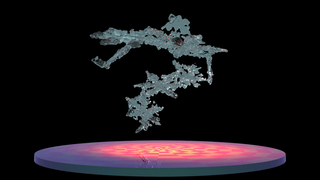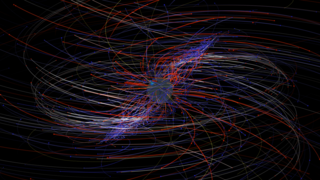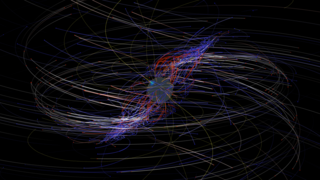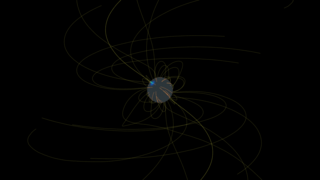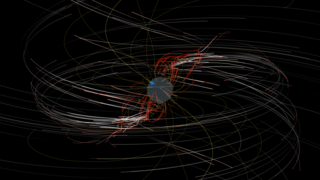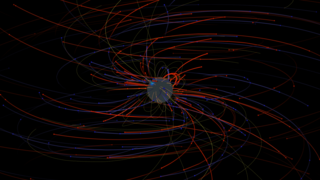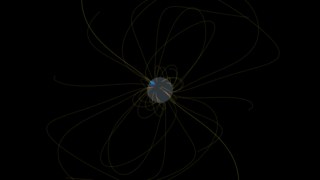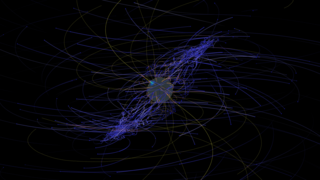Universe
ID: 13058
Scientists studying what amounts to a computer-simulated “pulsar in a box” are gaining a more detailed understanding of the complex, high-energy environment around spinning neutron stars, also called pulsars. The model traces the paths of charged particles in magnetic and electric fields near the neutron star, revealing behaviors that may help explain how pulsars emit gamma-ray and radio pulses with ultraprecise timing.
A pulsar is the crushed core of a massive star that exploded as a supernova. The core is so compressed that more mass than the Sun's squeezes into a ball no wider than Manhattan Island in New York City. This process also revs up its rotation and strengthens its magnetic and electric fields.
Various physical processes ensure that most of the particles around a pulsar are either electrons or their antimatter counterparts, positrons. To trace the behavior and energies of these particles, the researchers used a comparatively new type of pulsar model called a “particle in cell” (PIC) simulation.
The PIC technique lets scientists explore the pulsar from first principles, starting with a spinning, magnetized neutron star. The computer code injects electrons and positrons at the pulsar's surface and tracks how they interact with the electric and magnetic fields. It's computationally intensive because the particle motions affect the fields and the fields affect the particles, and everything is moving near the speed of light.
The simulation shows that most of the electrons tend to race outward from the magnetic poles. Some medium-energy electrons scatter wildly, even heading back to the pulsar.
The positrons, on the other hand, mostly flow out at lower latitudes, forming a relatively thin structure called the current sheet. In fact, the highest-energy positrons here — less than 0.1 percent of the total — are capable of producing gamma rays similar to those detected by NASA's Fermi Gamma-ray Space Telescope, which has discovered 216 gamma-ray pulsars.
The simulation ran on the Discover supercomputer at NASA’s Center for Climate Simulation at NASA's Goddard Space Flight Center in Greenbelt, Maryland, and the Pleiades supercomputer at NASA’s Ames Research Center in Silicon Valley, California. The model actually tracks “macroparticles,” each of which represents many trillions of electrons or positrons.
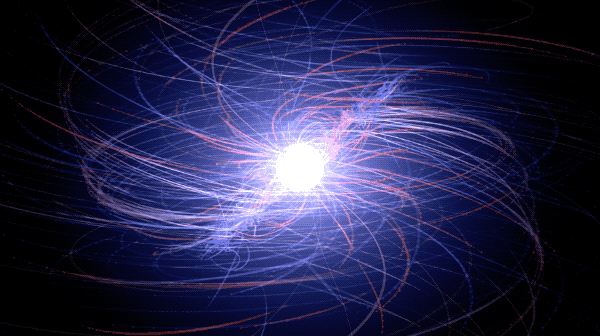
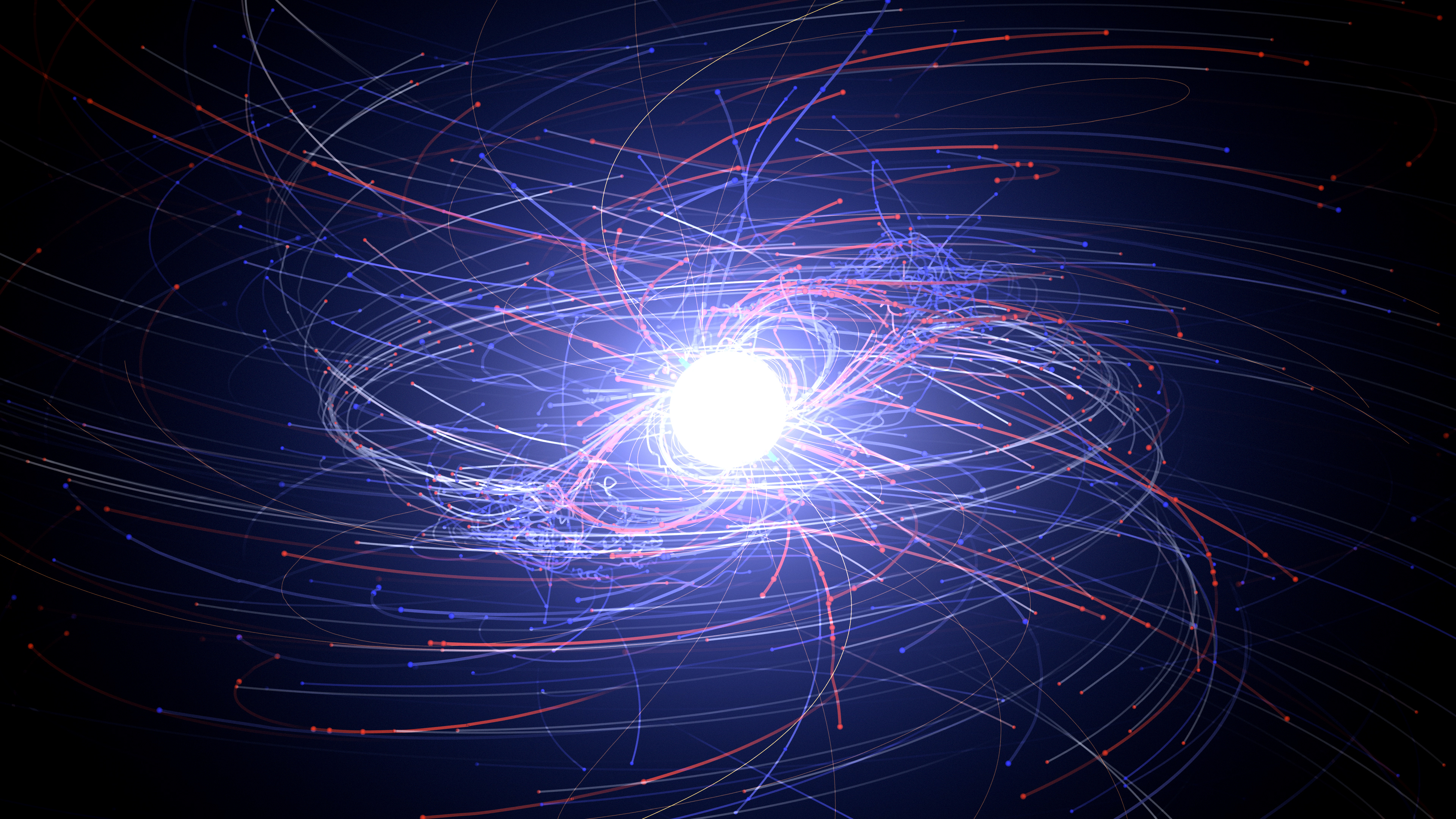
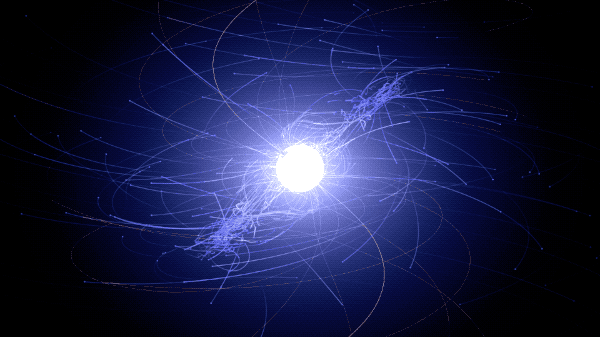
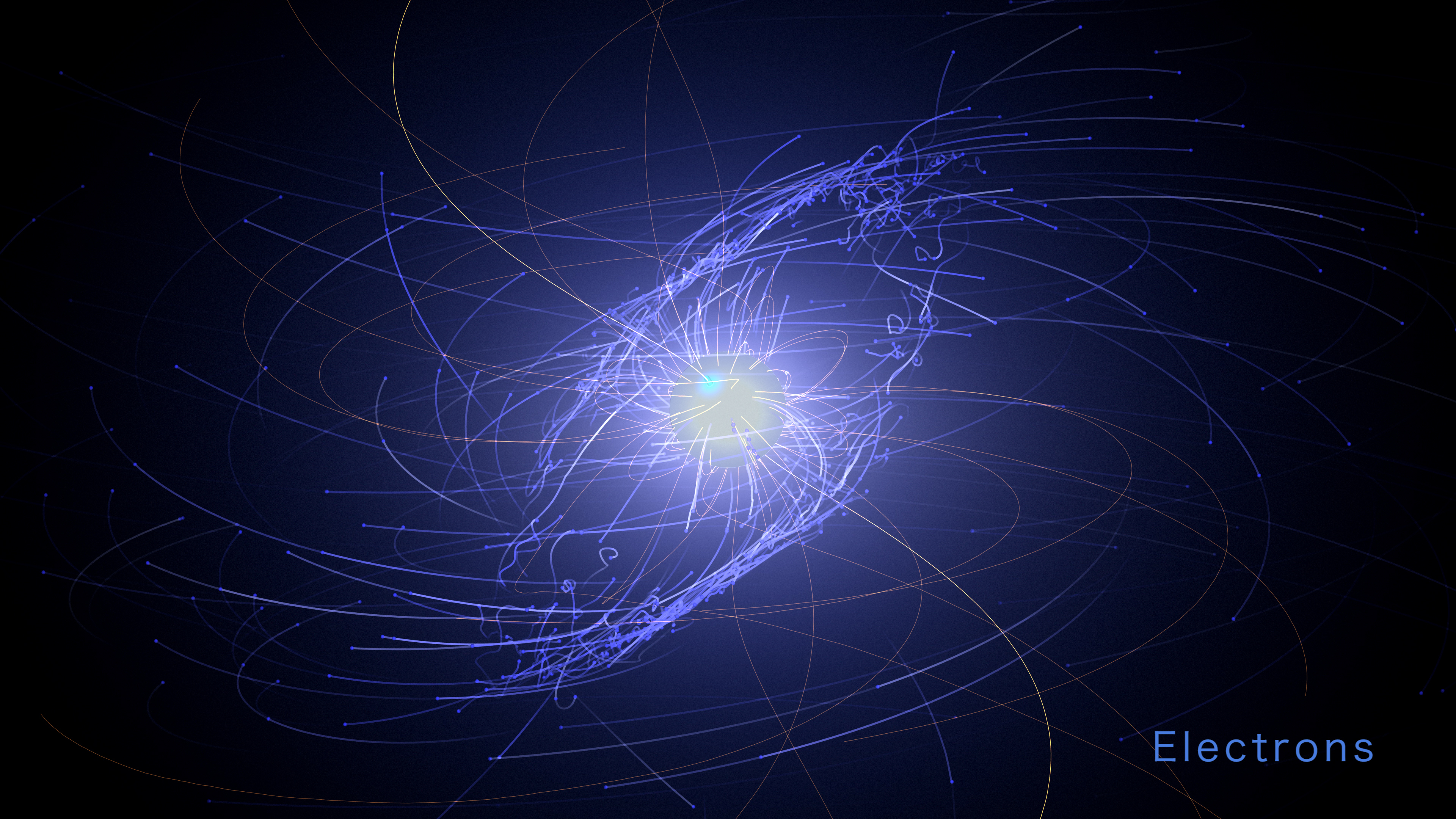
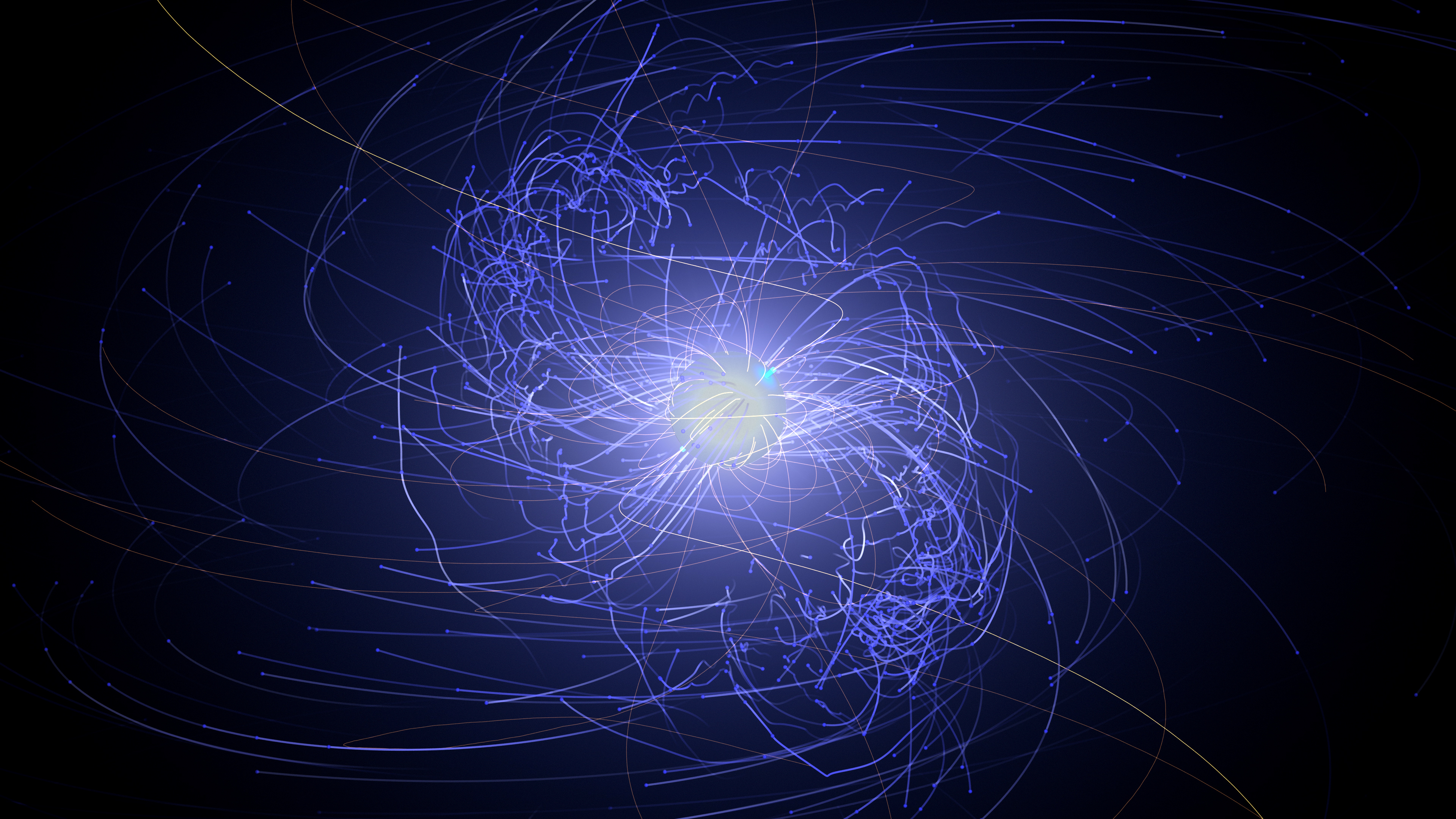
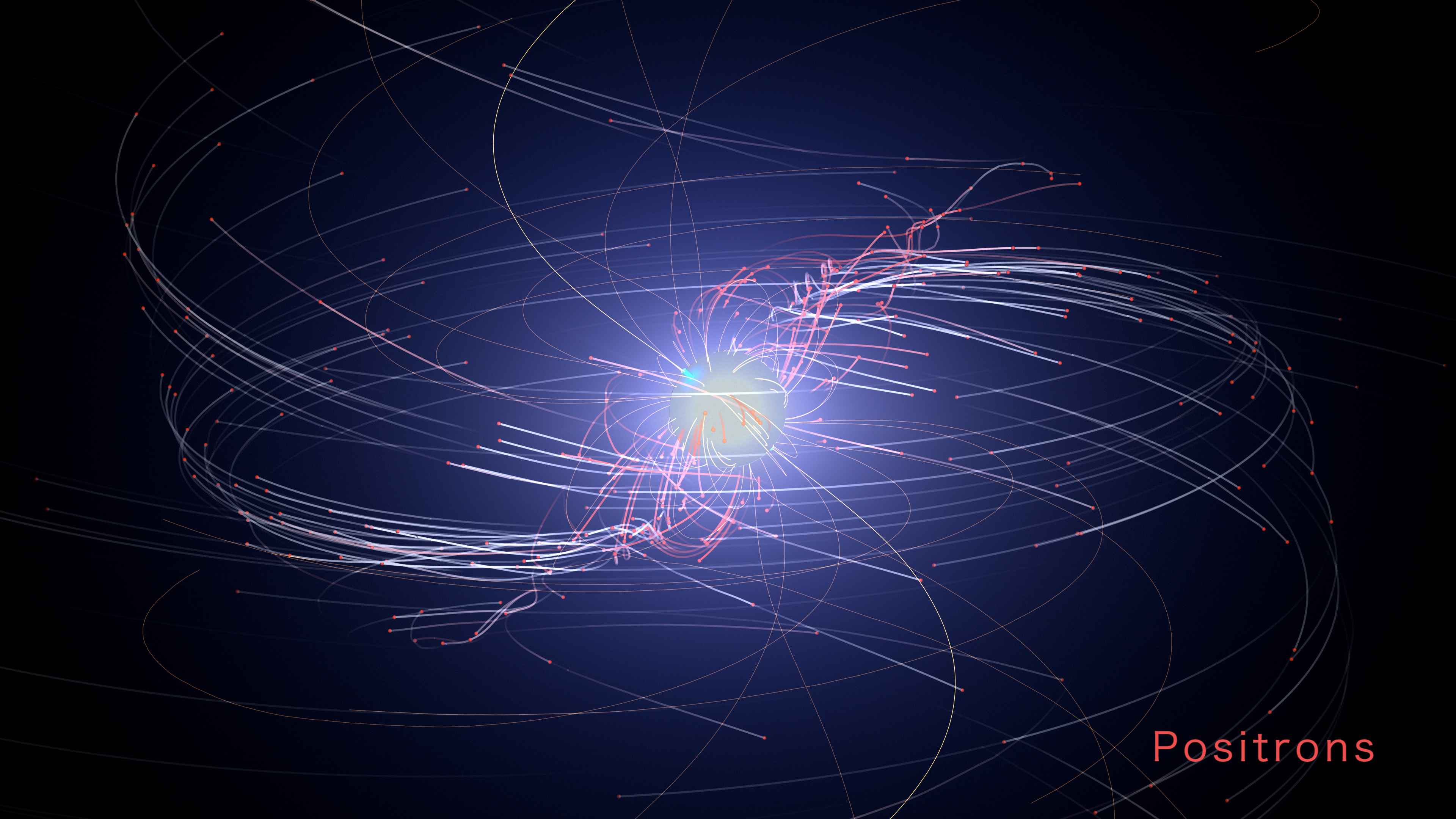
Simulations Create New Insights Into Pulsars
A pulsar is the crushed core of a massive star that exploded as a supernova. The core is so compressed that more mass than the Sun's squeezes into a ball no wider than Manhattan Island in New York City. This process also revs up its rotation and strengthens its magnetic and electric fields.
Various physical processes ensure that most of the particles around a pulsar are either electrons or their antimatter counterparts, positrons. To trace the behavior and energies of these particles, the researchers used a comparatively new type of pulsar model called a “particle in cell” (PIC) simulation.
The PIC technique lets scientists explore the pulsar from first principles, starting with a spinning, magnetized neutron star. The computer code injects electrons and positrons at the pulsar's surface and tracks how they interact with the electric and magnetic fields. It's computationally intensive because the particle motions affect the fields and the fields affect the particles, and everything is moving near the speed of light.
The simulation shows that most of the electrons tend to race outward from the magnetic poles. Some medium-energy electrons scatter wildly, even heading back to the pulsar.
The positrons, on the other hand, mostly flow out at lower latitudes, forming a relatively thin structure called the current sheet. In fact, the highest-energy positrons here — less than 0.1 percent of the total — are capable of producing gamma rays similar to those detected by NASA's Fermi Gamma-ray Space Telescope, which has discovered 216 gamma-ray pulsars.
The simulation ran on the Discover supercomputer at NASA’s Center for Climate Simulation at NASA's Goddard Space Flight Center in Greenbelt, Maryland, and the Pleiades supercomputer at NASA’s Ames Research Center in Silicon Valley, California. The model actually tracks “macroparticles,” each of which represents many trillions of electrons or positrons.






Used Elsewhere In
Source Material
For More Information
Credits
Scott Wiessinger (USRA): Lead Producer
Tom Bridgman (Global Science and Technology, Inc.): Lead Visualizer
Francis Reddy (University of Maryland College Park): Lead Science Writer
Gabriele Brambilla (University of Milan): Lead Scientist
Scott Wiessinger (USRA): Narrator
Scott Wiessinger (USRA): Editor
Alice Harding (NASA/GSFC): Scientist
Jeanette Kazmierczak (University of Maryland College Park): Science Writer
Tom Bridgman (Global Science and Technology, Inc.): Lead Visualizer
Francis Reddy (University of Maryland College Park): Lead Science Writer
Gabriele Brambilla (University of Milan): Lead Scientist
Scott Wiessinger (USRA): Narrator
Scott Wiessinger (USRA): Editor
Alice Harding (NASA/GSFC): Scientist
Jeanette Kazmierczak (University of Maryland College Park): Science Writer
Please give credit for this item to:
NASA's Goddard Space Flight Center. However, individual items should be credited as indicated above.
NASA's Goddard Space Flight Center. However, individual items should be credited as indicated above.
Science Paper:
http://iopscience.iop.org/article/10.3847/1538-4357/aab3e1/meta
Short URL to share this page:
https://svs.gsfc.nasa.gov/13058
Mission:
Fermi Gamma-ray Space Telescope
This item is part of these series:
Narrated Movies
Astrophysics Stills
Astrophysics Features
Pulsar Current Sheets
Keywords:
SVS >> HDTV
SVS >> Music
SVS >> Neutron Star
SVS >> Astrophysics
SVS >> Pulsar
SVS >> Edited Feature
SVS >> Space
SVS >> Fermi
DLESE >> Narrated
SVS >> Star
NASA Science >> Universe
SVS >> 4K
http://iopscience.iop.org/article/10.3847/1538-4357/aab3e1/meta
Short URL to share this page:
https://svs.gsfc.nasa.gov/13058
Mission:
Fermi Gamma-ray Space Telescope
This item is part of these series:
Narrated Movies
Astrophysics Stills
Astrophysics Features
Pulsar Current Sheets
Keywords:
SVS >> HDTV
SVS >> Music
SVS >> Neutron Star
SVS >> Astrophysics
SVS >> Pulsar
SVS >> Edited Feature
SVS >> Space
SVS >> Fermi
DLESE >> Narrated
SVS >> Star
NASA Science >> Universe
SVS >> 4K
